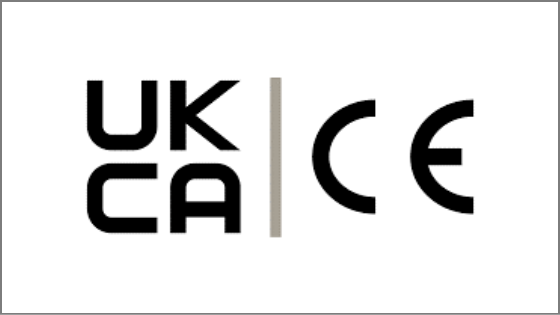
As a result of Brexit, cosmetic and personal care brands are preparing for the UK marking and testing to change for aerosols in 2023. Breaking away from current European Union (EU) labeling requirements, the UK is now requiring companies to comply with different labeling requirements depending on where they sell their product.
The UK Conformity Assessed (UKCA) from the UK Department for Business, Energy & Industrial Strategy, has created a new symbol, called the UKCA marking, for goods being placed on the market in Great Britain (England, Wales or Scotland). The new marking covers most goods that previously required the CE marking, and aerosol products that previously required the “reverse epsilon” marking. Now, companies will need to include the UKCA marking on their labels.
Timing of new UKCA marking
While the new UK Conformity Assessed (UKCA) marking went into effect January 1, 2023, businesses can continue using the EU’s CE marking until January 1, 2021 while adjusting to the new requirements. Also, if you placed goods on the UK market (or in an EU or EEA state) before January 1, 2021, they do not need to comply with the new marking or testing. They can continue to circulate in the market until sold to the end user. It is important to note that the new UKCA marking alone cannot be used for goods placed on the Northern Ireland market.
Six things you need to know for life after Brexit
Labeling rules for the new UKCA marking
Brands only need to use the new UKCA marking before January 1, 2023, if all the following apply to a product:
- It is for the market in Great Britain
- It is covered by legislation which requires the UKCA marking
- It requires mandatory third-party conformity assessment
- It’s product conformity assessment has been carried out by a UK conformity assessment body
While the general rule for the UKCA marking is that it must be clearly visible and legible when you affix it to the product, if this is not possible, you must attach it to the packaging (if any) or accompanying documents. UKCA markings must only be placed on a product by the manufacturer or the authorized representative (where permitted in the relevant legislation).
Additional rules for the UKCA marking include:
- When affixing, you take full responsibility for your product’s conformity with the requirements of the relevant legislation
- No marking or sign can be affixed that may misconstrue the meaning or form of the UKCA marking to third parties
- Do not attach other markings on the product which affect the visibility, legibility or meaning of the UKCA marking
- Do not place the UKCA marking on products unless there is a specific requirement to do so in legislation
- If the marking is reduced or enlarged, the letters forming the UKCA marking must be in proportion to the standard marking, which is at least 5mm in height (unless a different minimum dimension is specified in the relevant legislation)
- The UKCA marking must be easily visible and legible and maintain required proportions, but it can take different forms (color, transparency, etc.)
Maintaining UKCA documentation
A brand or its authorized representative must keep documentation to demonstrate that a product conforms with the UKCA regulatory requirements. These documents must be kept for up to 10 years after the product is placed on the market. Many brands are using the Ithos Information Network to store their UKCA documentation, because it can be requested at any time by market surveillance or enforcement authorities to verify a product still conforms with the statutory requirements.
Watch Ithos recent webinar on the impact of Brexit on cosmetic compliance. Our regulatory experts explain UKCA, as well as EPR, Green Claims Code, the Plastic Packaging tax and more. Learn how these changes affect your compliance process, what to expect next and the solutions Ithos has developed to help navigate Brexit changes.
Testing for UKCA Compliance
In addition to changes in marking, there are also new testing protocols for aerosols in the UK. SPC Enforcement 126 Version 4 relates to leak testing of filled aerosols in the UK. It has been updated to consider the 2009 revisions and the “Aerosol Dispensers Directive” has been fully implemented into UK law. This update clarifies the issues around immersion of aerosols during a water bath test.
Most aerosols are pressurized with propellants which may contain flammable solvents. Allowing water bath alternatives eliminates the need to heat the aerosols for the purpose of testing. Instead, there are stringent quality controls on containers and components to guard against the risk of bursting. The Aerosol Dispensers Directive also introduces a ‘micro-leak’ detection requirement to check the quality of the valve crimped on after filling.
Ithos will continue to monitor these changes and provide information on testing alternatives and other directives as the UKCA mark goes into effect. Be sure to sign up for our newsletter for updates on this and other compliance issues.






